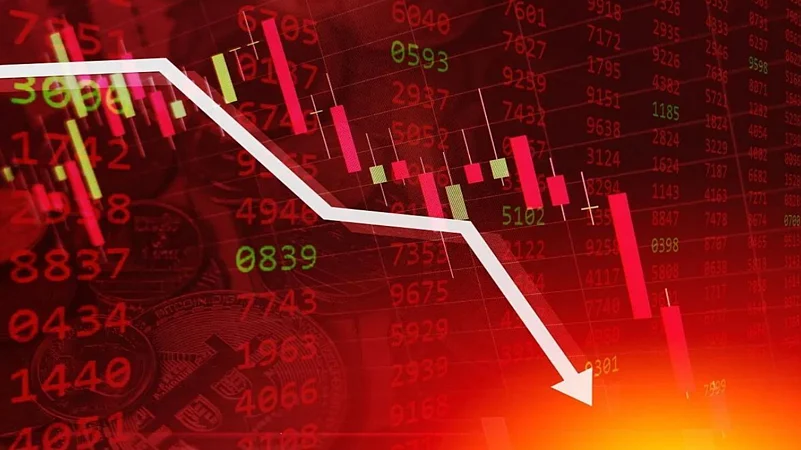Foreign institutional investors (FIIs) took a break from selling on February 4, 2025 and turned net buyers, making a net purchase of Rs 809.23 crore. Notably, this was the second time in 2025 that FIIs turned net buyers. However, a day later, on February 5, FIIs became net sellers again.
On February 5, FII’s gross purchase stood at Rs 14,112.34 crore and the gross sale stood at Rs 15,795.17 crore, resulting in a net sale of Rs 1,682.83 crore. In the same period, domestic institutional investors (DIIs) bought equities worth Rs 996.28 crore. In February, FIIs have net sold equities worth Rs 6,159.06 crore in February month-to-date, and DIIs have bought equities worth Rs 4,098.19.
So far, in 2025, FIIs have sold equities worth Rs 93,533.72 crore. Earlier in January 2025, FIIs sold equities worth Rs 86,591.8 crore, the second highest sell-off seen in the Indian markets after October 2024, when FIIs sold equities worth Rs 1,14,445.89 crore. Following the February 4, 2025 session, there was some hope of a pause in FII sell-offs.
Prashanth Tapse, senior vice president and research analyst at Mehta Equities told Outlook Money that while the FIIs turned net-buyers on February 4, 2025, the purchase made by FIIs was very low and does not mean they have changed their outlook on the market. He added FIIs may have turned net buyers because they increased their ‘long-positions’. Increasing long positions refers to buying securities and expecting their price to increase.
“So they (FIIs) have just reduced their short position and converted some of the long positions in the long market. But the implication would not be so positive because it was a one-day event only that too a very minimal Rs 800 crore. That doesn’t mean they have changed their outlook on the market,” Tapse said.
What’s Prompting FIIs To Sell
FIIs have been net sellers since September 2024. Several factors such, as a depreciating rupee, high valuations and Donald Trump becoming US President have prompted the sell-offs.
Weakening Rupee And Profit Booking
Tapse said that a weakening rupee is causing FIIs to sell Indian equities. Notably, the Indian rupee fell to a record low of Rs 87.5 per dollar on February 6. He added that the weakening rupee has created an opportunity for FIIs to book profits and they may be earning as much as 8-10 per cent in profit on the basis of the rupee depreciation.
“The way the rupee is weakening day-by-day from Rs 84 to Rs 87, I think that is giving them a lot of opportunity to book profits. Because when they were in India, it was almost Rs 80-81, two-to-three years back. They are taking their own money out at the rate of Rs 86-87. So, by default they are earning almost 8-10 per cent because of rupee depreciation,” Tapse added.
High Valuations of Indian Markets
Tapse added that the sustained selling by FIIs has also been caused by high valuations of the Indian markets. He added that Indian markets had the highest valuations among Asian markets which made them costly. Indian indices traded at record highs earlier in September 26, 2024 as the 30-share Sensex neared the 87,000 levels.
“Valuations were very high when markets were at an all-time high in the months of October, and September. Indian markets were at the highest in terms of results and costliest among Asian markets in terms of valuation. That was one trigger they started taking away the money,” Tapse added.
Trump Factor
Tapse noted that the return of Donald Trump as the President of the US also prompted the FIIs to sell. He added that Trump’s presidency has been historically good for US markets. Key indices, such as the NASDAQ and S&P have gained up to 100 per cent in the Trump 1.0 era. Notably, the S&P 500 index gained 69.58 per cent to hit 3851.8 levels in the four years of Trump 1.0 which started on January 20, 2017 and ended on January 20, 2021.
“They (FIIs) were sure that Trump will be coming back as US President. So, they wanted to catch up the Trump momentum. If you analyse Trump’s last term as President from 2017-2021, the NASDAQ and S&P and rallied 50-100 per cent. So that was the reason why FIIs were going to be in their own country that is the US,” Tapse added.
FII Selloffs Not Ending Anytime Soon?
Tapse projected that FII selloffs were not likely to end anytime soon as the earnings for the third quarter of FY25 have not been up to the mark. He added that a disappointing Q3 was also likely to lead to a de-rating or downgrading of the top 100 companies. However he expects FII selloffs for the month of February to be lower than January, ranging between Rs 30,000 crore and Rs 40,000 crore, he added.
“I think the sell-off will continue in the near term, but may not be to the extent it was in January. FIIs sold almost Rs 80,000-90,000 crore. But in February, the sell-off may not be that much, we may have Rs 30,000-40,000 crore in selloffs from FIIs. One reason I can give for that is because our quarterly earnings are not so up to the mark. So there may be some kind of de-rating or downgrading of the top hundred companies,” Tapse said.
He further said that the sell-offs are likely to continue for the upcoming quarter of FY 2025. He added that the sell-offs may pause or reduce only after the first quarter of the next financial year (Q1FY26). Sell-offs may pause following an impetus to consumption announced in the Budget in the form of revised tax slabs and the expectation that major Indian companies may show volume growth in Q1FY26.
“So for another quarter or two quarters, maybe up to the first of the next financial year, FIIs will remain mainly in the sell mode. So, from a long-term perspective, sell-offs are not likely to pause. There may be a pause because we may get the effect of the new Budget and consumption story playing out over the next financial year and volume growth in the companies, which are listed. FIIs want to test how Q4FY25 is so that they can come back to India,” Tapse said.
What Should Investors Do?
Tapse advised existing investors to ‘wait and watch the market’ amid increased volatility. He emphasised that uncertainty around Trump’s policy decisions has increased volatility. The India VIX which measures the expected volatility of the stock market over the next 30 days closed higher by 0.092 points or 0.66 per cent at 14.18 levels indicating increased volatility. Tapse also advised new investors to enter the market, but recommended making a gradual entry while monitoring Trump’s policy decisions closely.
“Investors should see how Trump is going to behave in the next one or two months. So considering this, volatility will be part of the Indian market. But someone who would like to invest and doesn't want to wait for some time can start investing gradually in the current market,” Tapse said
















